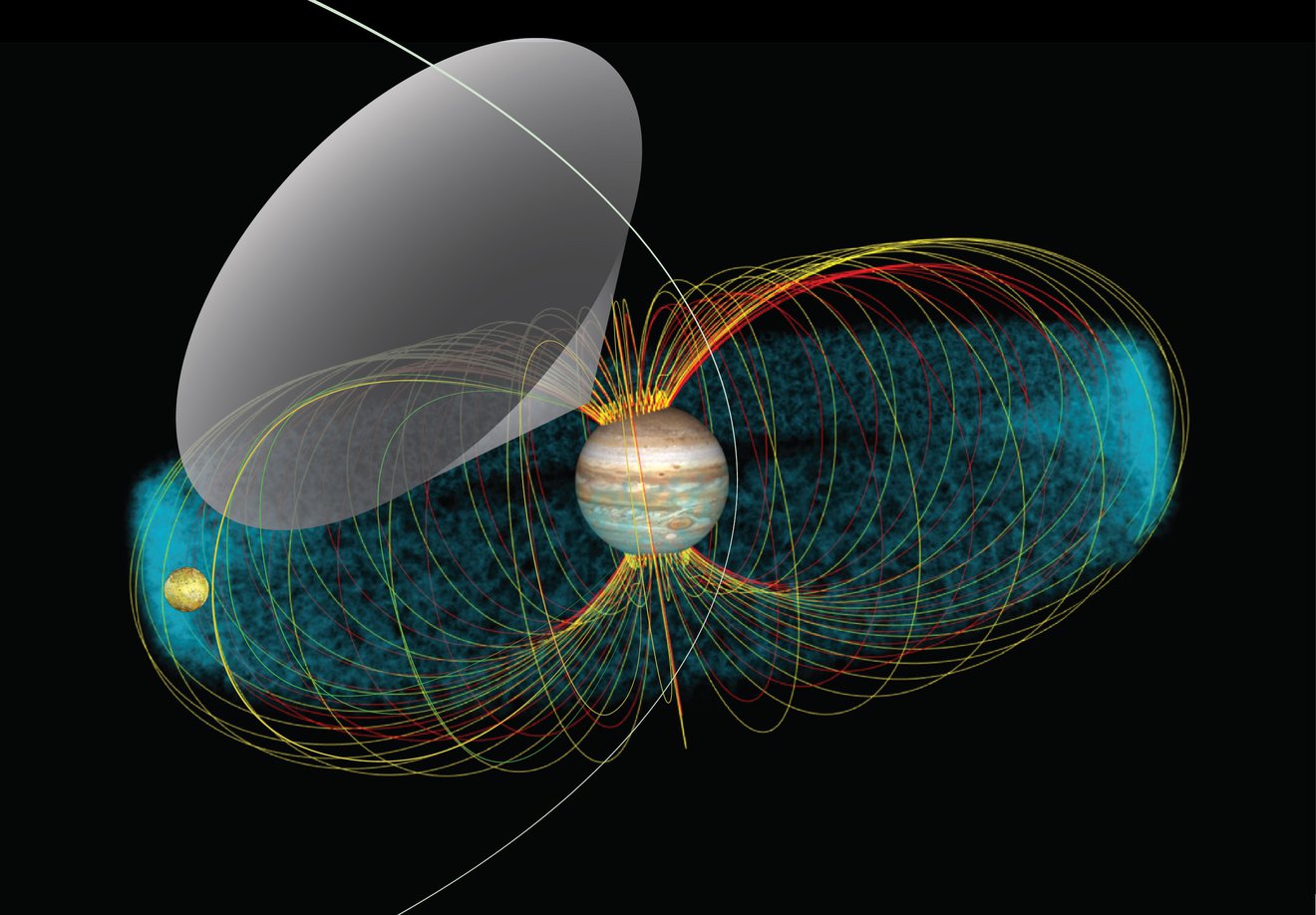Jupiter's volcanic moon Io is emitting strange radio waves and NASA's Juno probe is listening
The Juno spacecraft has gotten a private radio show from Jupiter's closest moon, the highly volcanic Io.
NASA's Juno spacecraft is "listening" in on radio emissions from Jupiter's volcanic moon Io, allowing researchers to discover what triggers the strange radio waves.
Of all the planets in our solar system, Jupiter has the largest and most powerful magnetic field, which extends so far that some of the planet's moons orbit within it. Because Io is closest to the planet, the moon is "caught in a gravitational tug-of-war" between Jupiter and two other large moons, according to NASA. These opposing pulls cause massive internal heat, which has led to hundreds of volcanic eruptions across the moon's surface.
The volcanos release 1 ton of gasses and particles per second into space, NASA said in a statement. Some of this material splits into electrically charged ions and electrons that then rain down onto Jupiter through the planet's magnetic field. Electrons caught in the magnetic field are accelerated toward Jupiter's poles and, along the way, generate a phenomenon scientists call decameter radio waves (also known as decametric radio emissions, or DAM).
Related: Amazing photos: Jupiter's volcanic moon Io

When the spacecraft is in the right spot to listen, Juno's Waves instrument can pick up these radio waves, Yasmina Martos of NASA's Goddard Space Flight Center said in the statement. Researchers have used data from Juno to pinpoint where in Jupiter's massive magnetic field the radio emissions come from. The data sheds light on the behavior of the enormous magnetic fields gas giants create.
According to the research team, the radio waves come from space that can be described as a hollow cone, where the conditions are just right: the right magnetic field strength and the right density of electrons. The signal rotates like a lighthouse and Juno picks it up only when the "light" is shining on the spacecraft, according to the NASA statement.
The radio data also showed that the electrons that create these radio waves emit a massive amount of energy, 23 times greater than researchers expected. Such electrons can come from other sources, too, such as from the planet's magnetic field or from a solar wind, according to the research team.
Get the Space.com Newsletter
Breaking space news, the latest updates on rocket launches, skywatching events and more!
Follow Kasandra Brabaw on Twitter @KassieBrabaw. Follow us on Twitter @Spacedotcom and on Facebook.
Join our Space Forums to keep talking space on the latest missions, night sky and more! And if you have a news tip, correction or comment, let us know at: community@space.com.

Kasandra Brabaw is a freelance science writer who covers space, health, and psychology. She's been writing for Space.com since 2014, covering NASA events, sci-fi entertainment, and space news. In addition to Space.com, Kasandra has written for Prevention, Women's Health, SELF, and other health publications. She has also worked with academics to edit books written for popular audiences.









